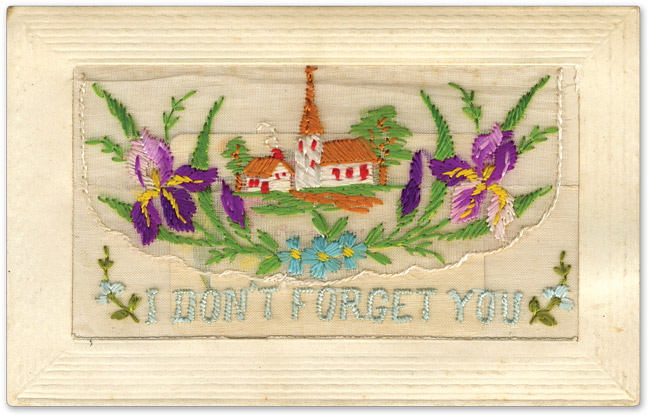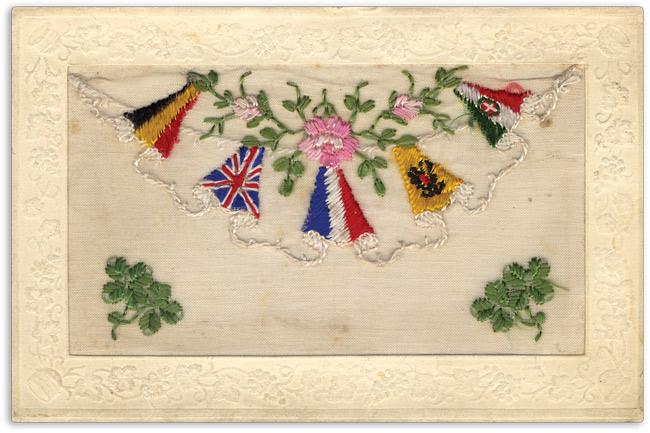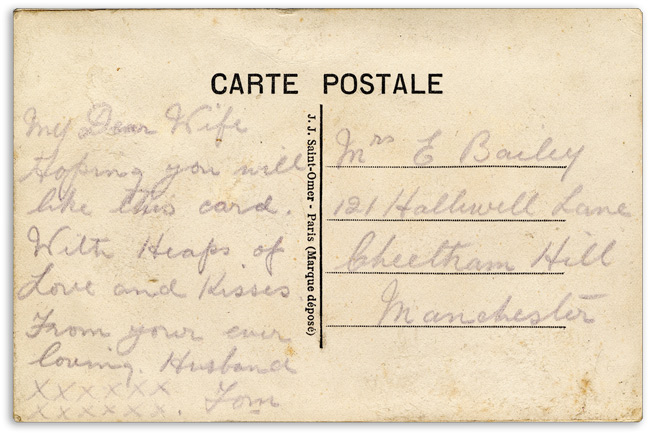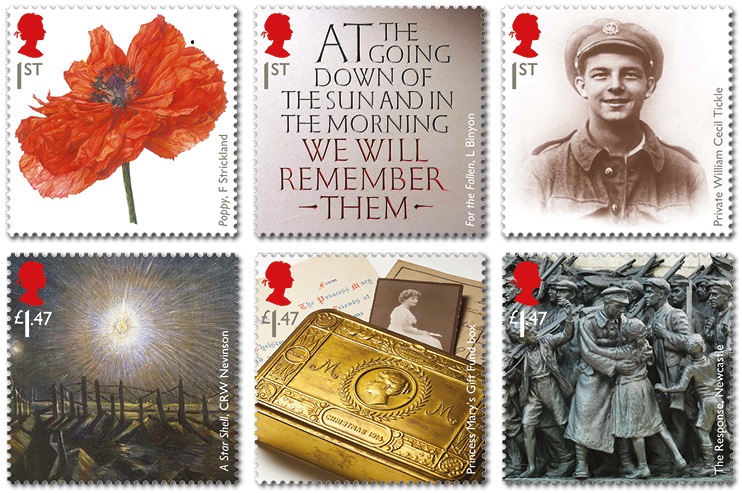First World War
Messages from the trenches of the First World War
100 years on, the images of the Western Front continue to haunt us. A picture of carnage in a grey hell of barren mud. For our soldiers, life in the trenches could be a lonely experience. Just imagine being hundreds of miles away from home and in constant fear of an enemy attack.
 Receiving and sending communications back home to loved ones proved a valuable morale booster and offered a brief escape from the daily horrors of war. Soldiers would send letters, souvenirs and postcards back to their family and friends and then eagerly await a reply.
Receiving and sending communications back home to loved ones proved a valuable morale booster and offered a brief escape from the daily horrors of war. Soldiers would send letters, souvenirs and postcards back to their family and friends and then eagerly await a reply.
Some of the most popular items to send back were embroidered postcards which have become known as WWI Silks. These colourful embroidered postcards were first produced in 1914 and continued to be produced throughout the war. Most were embroidered by French and Belgian women refugees who worked in their homes or in refugee camps. Their finished creations were then strimmed and mounted on postcards.
Their beauty and uniqueness made them popular with British soldiers serving in France and Belgium. They were often very patriotic and featured allied flags, symbols and greetings.
The embroidered panels could be quite delicate in design and many of the cards used the structure of the embroidery to create a tiny envelope which would often feature an additional greeting card.
Most cards were sent home in military mail pouches which not only protected the card and message in transit but also complied with Post Office regulations that they did not “inconvenience Post Office machinery”.
Once received back home there would often be no indication of what the soldiers were experiencing, sparing mothers and wives from the true horrors of war.
Almost a century after they were first issued, these WWI Silks are very collectable. We  have limited stock available.
have limited stock available.
Please click here for details…
Why we will soon all know the story of the boy soldier on a stamp …
 The prospect of going to fight for your King and Country would seem bizarre for most teenagers today.
The prospect of going to fight for your King and Country would seem bizarre for most teenagers today.
But in 1914, that is exactly what William Cecil ‘Billie’ Tickle did. At just 15 – officially three years too young to enlist – he lied about his age and joined the British Army at the start of the First World War.
Originating from Hornsey in Middlesex, he was just an ordinary teenager but found himself in 9th Battallion, Essex Regiment, fighting alongside countless young soldiers like himself. His troop was thrust into France the following spring after training, and straight in the midst of heavy battle.
Against all odds, Private Tickle made it through until 1916 and the Battle of the Somme. On 3rd July 1916, Private 13510 Tickle was killed in action at Ovillers, and his body never found. But not before he sent a photo of himself in his uniform back home to his mother…
His mother’s handwritten note underneath describes him as ‘One of the very best.’ Billy Boy’s story is not exceptional, there are plenty more stories like his. But little did he know that one hundred years later that very photograph would be chosen by Royal Mail to feature on an official British 1st Class postage stamp.
The smiling portrait of Private Tickle appears alongside five other stamps in Royal Mail’s ‘Great War’ Issue, which is being released on Monday 28th July to coincide with the Centenary of the outbreak of the First World War.
 These stamps are now available to own on a limited edition Silver Proof Coin Cover.
These stamps are now available to own on a limited edition Silver Proof Coin Cover.
NOW SOLD OUT.




